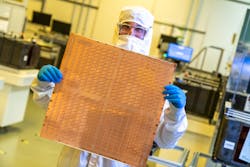Keeping Up with the Never-Ending Innovation Train
Even with all our advanced tools from chatbots to smartphones, we still need to locate, understand, and utilize the latest technology innovations to stay ahead of the competition. These days, this isn’t easy. It’s simply not possible to chase down all of the options and incorporate them into a product or service. However, making the wrong choice or ignoring advances can result in falling behind or getting pushed out by the competition.
I’ve been writing about electronic and computer technology for decades and it’s a challenge for me to keep abreast of everything that’s cropping up. Having degrees and a background in electronics and computers has helped a lot. But, for example, changes in artificial intelligence (AI) from rule-based systems that I started with, to the various neural networks, and, lately, large-language-model (LLM) chatbots, are radically different.
The challenge for engineers and programmers is not just learning about what’s new, but also how things go together. I recently did a video and article entitled “Through the Substrate Looking Glass” about Intel’s use of glass substrates (see figure). This technology is important because of its relationship to chiplet-based solutions as well as supply-chain issues with currently employed substrates. It’s the relationship between new technologies and methods that we try to highlight at Electronic Design and more broadly in our Endeavor Design and Engineering Group that includes publications like Microwaves & RF and Power and Motion.
Another example shows up in one of our sponsored webinars: “Utilizing the Best Switch Technology for Power Supplies." Power Integrations’ Andrew Smith talks about GaN and SiC wide-bandgap technologies.
The one thing I found most interesting was the charts showing the overlap of silicon, SiC, and GaN, and the amount of overlap that exists, which means many applications can utilize two or more technologies. Trying to figure out the tradeoffs, advantages, and disadvantages are what developers need to contend with even as improvements are being made.
One can’t assume existing solutions are the best either, as noted by Lee Goldberg’s article, “New Motor Designs Help EV Makers Kick the Rare-Earth Habit.” This ties in with the supply chain, as rare-earth magnets have advantages for motors but don’t do well if the materials are no longer available or become more expensive.
Being an engineer and programmer now is more interesting and more exciting than ever, with so many tools and devices readily available. However, keeping up with them is no easy task.
About the Author
William G. Wong
Senior Content Director - Electronic Design and Microwaves & RF
I am Editor of Electronic Design focusing on embedded, software, and systems. As Senior Content Director, I also manage Microwaves & RF and I work with a great team of editors to provide engineers, programmers, developers and technical managers with interesting and useful articles and videos on a regular basis. Check out our free newsletters to see the latest content.
You can send press releases for new products for possible coverage on the website. I am also interested in receiving contributed articles for publishing on our website. Use our template and send to me along with a signed release form.
Check out my blog, AltEmbedded on Electronic Design, as well as his latest articles on this site that are listed below.
You can visit my social media via these links:
- AltEmbedded on Electronic Design
- Bill Wong on Facebook
- @AltEmbedded on Twitter
- Bill Wong on LinkedIn
I earned a Bachelor of Electrical Engineering at the Georgia Institute of Technology and a Masters in Computer Science from Rutgers University. I still do a bit of programming using everything from C and C++ to Rust and Ada/SPARK. I do a bit of PHP programming for Drupal websites. I have posted a few Drupal modules.
I still get a hand on software and electronic hardware. Some of this can be found on our Kit Close-Up video series. You can also see me on many of our TechXchange Talk videos. I am interested in a range of projects from robotics to artificial intelligence.


